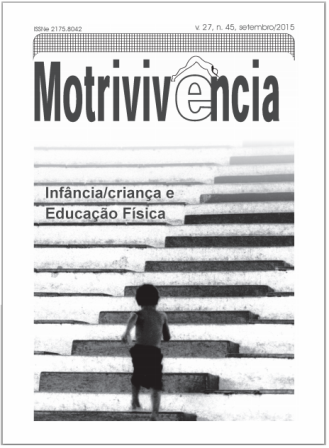The control of subjectivity and of the sensible corporal experiences: implications for the playand-self-movement of the child
DOI:
https://doi.org/10.5007/2175-8042.2015v27n45p44Abstract
In this study, we approach the formation and the control of the child subjectivity as a manner of; implied or indirectly, among other effects; depriving it of carrying out sensitive body experiences. The relation between those two themes brings implications for the world of movements of the child, specially about its “playand-self-movement”. We call attention to an “adult-centric” view of childhood, which, many times disregards the real interests of the young ones, focusing in a preparation for the future. We consider that the valorization of the free and spontaneous playing can take the child to a meeting with the sensitive body experiences. It’s though the experience that the child is author and creator, assigning senses and meanings by creative playing. To the adults (parents and teachers) fits the role of configuring opening spaces for those moments, enabling the child to know by experience.
Downloads
Published
How to Cite
Issue
Section
License
Os autores dos textos enviados à Motrivivência deverão garantir, em formulário próprio no processo de submissão:
a) serem os únicos titulares dos direitos autorais dos artigos,
b) que não está sendo avaliado por outro(s) periódico(s),
c) e que, caso aprovado, transferem para a revista tais direitos, sem reservas, para publicação no formato on line.
Obs.: para os textos publicados, a revista Motrivivência adota a licença Creative Commons “Atribuição - Não Comercial - Compartilhar Igual 4.0 Internacional” (CC BY-NC-SA).



